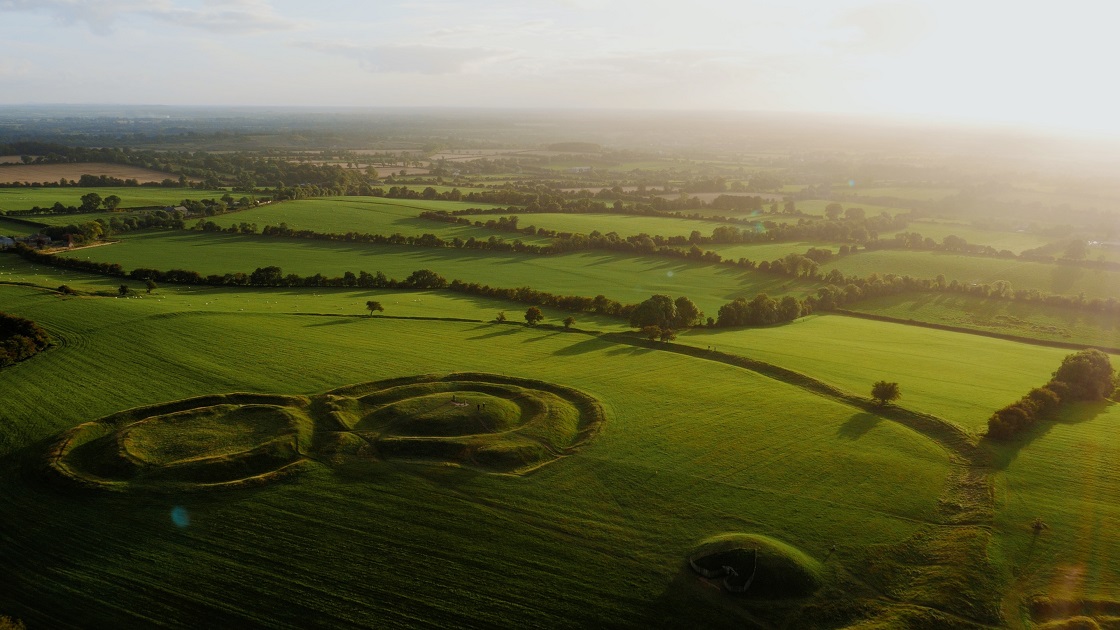Ireland
The Hill of Tara; Exploring the Treasure of Ireland

Visiting Ireland, one is drawn to the ancient ruins of a time long passed, a time of ancient religion and mystical powers beyond our understanding. No site better illustrates this than the one In County Meath, Ireland.
The Hill of Tara (Teamhair or Cnoc na Teamhrach) is a site dating back to the Neolithic Age; an archeological and historical wonder featuring several monuments including passage tombs, burial mounds, and a standing stone.
Tara’s Significance
In Irish mythology, Tara is said to have been the home of Ireland’s numerous High Kings. This is detailed in the tale of Conn of the Hundred Battles, and how the Otherworld bestowed the throne upon him, showing the divine significance of the site.
Evidence indicates that Tara was a location of significance long before the Medieval Celts, with ties to the Tuatha de Danaan, a wave of settlers who are said to have introduced the concept of mystic arts and the occult to Ireland.
While no archeological evidence of permanent habitation has been discovered, evidence shows that Tara, its Irish name being Teamhair na Rí (‘the Hill of the King,’) served as the seat of Ireland’s High King. It was also a venue for coronations, legislative enactment and proclamation, and religious events, spanning from the Iron Age to the Norman Invasion (1st through 12th centuries). To this day, it remains an important part of Irish cultural identity
If you were to stand at the hilltop on a clear day, it becomes easy to understand why the place was so important to the early Irish. During seasonal feasts, bonfires lit from this, and other hilltops would have been visible for miles. From the highest point, multiple important areas (most featuring monuments, tombs, and villages) can be seen: the Hills of Slane, Skrne, and Tailte, the Hills of the Witch/Slieve na Callaigh in Oldcastle, the Hill of Uisneach in Co. Westmeath, and Slieve Gullion and the Mourne Mountains in Co. Down.
Structures of Importance
In total, there are around thirty visible monuments at Tara, with many more discovered through non-intrusive archeological methods. The most renowned monument, and certainly the most fascinating, is the ancient coronation stone – the Lia Fail or “Stone of Destiny,” one of two standing stones at Tara.
Situated upon the King’s Seat (Forradh) of Temair, it is said that when the foot of a true Irish king was placed upon Lia Fail, the stone cried out, proving his right to kingship. It was previously located just north of the Mound of the Hostages, moved to its present position following the Battle of Tara during the Irish revolution of 1798.
Umha na nGiall (‘the mound of the hostages’) is the oldest visible monument, built around 2500 – 3000 BC. The term “Mound of the Hostages” refers to the practice of keeping prominent figures from other countries as hostages to ensure their obedience. For example, one of Tara’s mythological monarchs was known as Niall of the Nine Hostages, because he held captives from all of Ireland’s provinces as well as from Britain.
Umha na nGiall is a megalithic passage tomb housing the remains of over 500 people (give or take a few) and features a small entrance built into the side, the monument itself measuring a circumference of 15 meters and a height of 3 meters. The walls within are adorned with ancient engravings and spirals, and the entrance is positioned to capture the light of sun and moon at certain times of the year.
The Hill of Tara’s buildings appear to have been built of wood and have since fallen apart. Archaeologists uncovered the remains of huge structures that might have been used for rituals, political gatherings, and community events, though the only traces of inhabitation are large ditches and banks known as raths that were built up around the buildings.
The Rath (Fort) of the Kings, also known as Ráith na Ríogh, is an iron-age hill fort that is the most prominent of all the enclosures at Tara, encompassing some much older and even more significant structures, including the mound of the hostages and the lia fail.
To this day, Tara remains a treasured part of Irish history and culture, being a site of great significance.
Despite falling out of official use with the coming of Christianity, it maintains its reputation as a popular gathering place and true archeological wonder; a portal to a time long gone, forever in the hearts of the people.
References:
http://atriptoireland.com/2013/06/26/a-brief-history-of-the-hill-of-tara/
https://www.worldhistory.org/Hill_of_Tara/
https://www.discoverboynevalley.ie/boyne-valley-drive/heritage-sites/hill-tara
https://mythicalireland.com/ancient-sites/the-hill-of-tara-teamhair/
